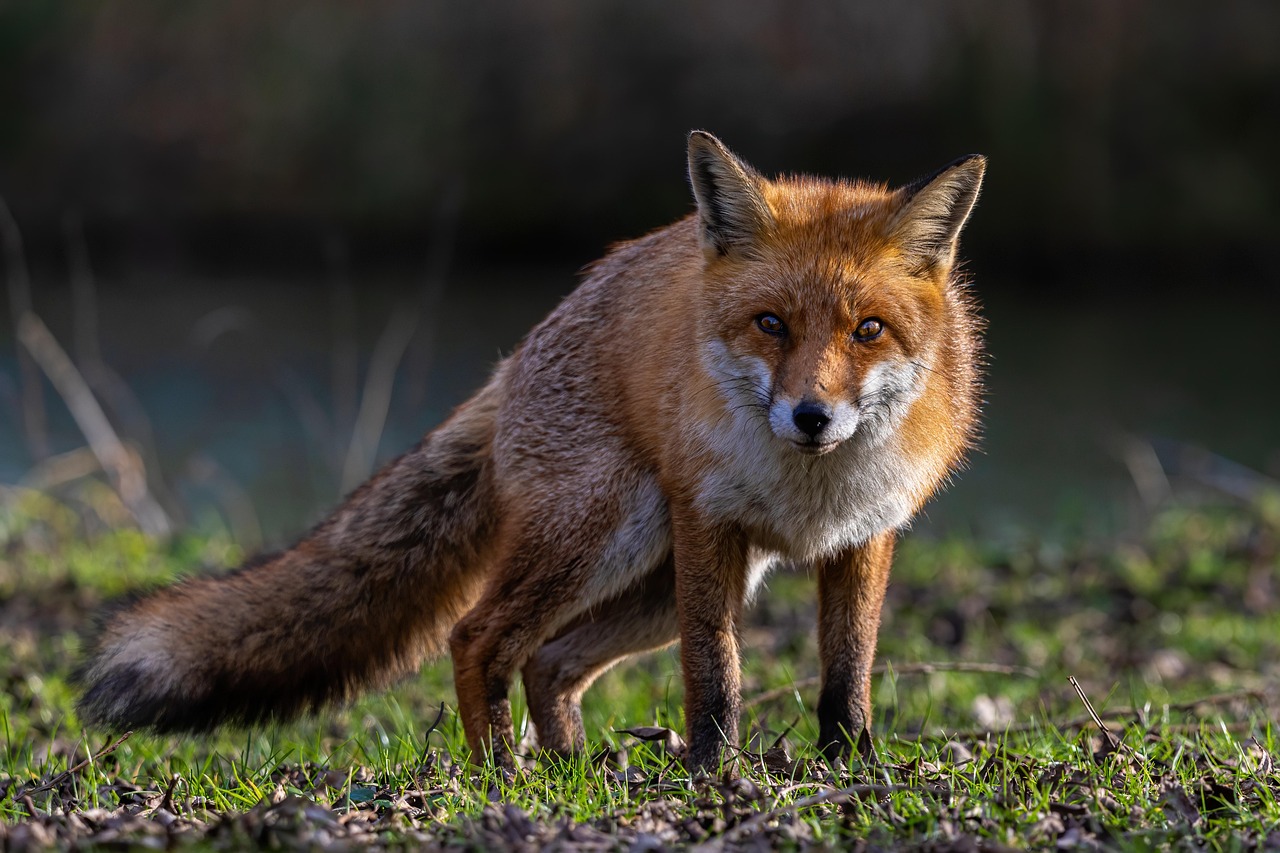Red Fox (Rödräv)

Characteristics:
The red fox is a medium-sized member of the dog family, with a slender body and a long, bushy tail. Body length 60–90 cm, tail 30–50 cm, and weight 4–10 kg. The fur is typically reddish-brown with a white underside, white tail tip, and black ears and legs. Colour varies between individuals — some may appear darker or greyish. The fox has a pointed muzzle, slim legs, and large ears that give it an excellent sense of hearing.
Habitat:
The red fox is found throughout Sweden, from Skåne in the south to Lapland in the north, and is Sweden’s most common carnivore. It thrives in forest edges, farmland, moorlands, mountains, islands, and even urban areas — an extremely adaptable species capable of living in almost any environment.
Behaviour:
The fox is mainly active at dawn and dusk, but may also be seen during the day, especially in summer. It usually lives solitary, though during the breeding season it shares its territory with its mate and offspring. Territories are marked with scent and droppings.
The red fox is a clever and opportunistic hunter, taking advantage of whatever food is available.
Diet:
The red fox is omnivorous. It feeds on small rodents, hares, birds, eggs, berries, insects, and carrion, but also eats fruit, crops, and human waste. During winter, voles and mice are especially important food sources.
Reproduction:
Mating occurs in January–March. Gestation lasts about 52 days. The female gives birth to 4–6 pups in March–May, usually in an earth den dug in sandy soil or under rocks or tree roots. The pups leave the den after 4–5 weeks and become independent by late summer.
Tracks and signs:
- Tracks: Similar to those of a dog, but narrower and more symmetrical. Front paw 4.5–6 cm, hind paw slightly smaller. Step length 35–45 cm.
- Droppings (scat): Often placed on stones, stumps, or paths to mark territory. May contain hair, bones, berries, or seeds.
- Dens: Entrances in slopes or sandy soil, often with piles of dirt outside.
- Kills: Sometimes buried or covered with soil or vegetation.
Distribution:
The red fox occurs throughout the Northern Hemisphere and is the world’s most widespread carnivore. In Sweden, the population increased significantly after the mange epidemic of the 1980s subsided. It is common and legally hunted.
Hunting:
Foxes are hunted mainly in autumn and winter using several methods:
- Calling (predator call, hare distress call, mouse squeak)
- Stalking or ambush hunting at bait sites
- With hounds
- Den hunting with trained terrier dogs
Red fox pelts are also used in the fur trade.
Firearm class (Sweden):
Foxes are hunted with class 1-3 rifles or shotguns (commonly pellet size no. 3–5). For bait or long-range hunting, a class 1-2 rifle is recommended.
Think for the hunting exam:
- Sweden’s most common predator.
- Recognised by red coat, white tail tip, and pointed muzzle.
- Omnivorous and highly adaptable, often living near humans.
- Mates in January–March, pups born in March–May.
- Tracks: dog-like but narrower and straighter.
- Hunted with class 1-3 rifle or shotgun.
